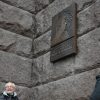A coronavirus variant that originated in Spanish farm workers has spread rapidly throughout Europe and now accounts for most UK cases, a new study suggests.
The variant, called 20A.EU1, is known to have spread from farm workers to local populations in Spain in June and July, with people then returning from holiday in Spain most likely playing a key role in spreading the strain across Europe.
However, experts behind the study, which has not yet been peer reviewed in a medical journal, said there was currently no evidence that the strain spread faster than other strains of coronavirus. There is also no suggestion that the strain causes more severe disease, or would affect how a vaccine works.
Dr Emma Hodcroft, an evolutionary geneticist at the University of Basel and lead author of the study, told BBC Radio 4’s Today programme: “We know there was a super-spreading event among agricultural workers in Spain, that then the virus was able to jump into the local population and start moving more generally around Spain.
“This happened in June and July, when travel was picking up again in Europe, and of course Spain’s a wonderful holiday destination and many people headed there. What we think happened is that rising cases in Spain combined with that increase in holiday travel allowed the virus to move to many different countries across Europe and, when it got there, it was able to spread quite successfully.”
Quick guide What are the three tiers of England’s Covid lockdown system?
Show
Hide
Tier one – medium
- The “rule of six” applies, meaning socialising in groups larger than six people is prohibited whether indoors or outdoors.
- Tradespeople can continue to go into a household for work and are not counted as being part of the six-person limit.
- Businesses and venues can continue to operate but pubs and restaurants must ensure customers only consume food and drink while seated, and close between 10pm and 5am.
- Takeaway food can continue to be sold after 10pm if ordered by phone or online.
- Schools and universities remain open.
- Places of worship remain open but people must not mingle in a group of more than six.
- Weddings and funerals can go ahead with restrictions on the number of people who can attend (15 and 30 respectively).
- Exercise classes and organised sport can continue to take place outdoors, and – if the rule of six is followed – indoors.
Tier two – high
- People are prohibited from socialising with anybody outside their household or support bubble in any indoor setting.
- Tradespeople can continue to go into a household for work.
- The rule of six continues to apply for socialising outdoors, for instance in a garden or public space like a park or beach.
- Businesses and venues can continue to operate but pubs and restaurants must ensure customers only consume food and drink while seated, and close between 10pm and 5am.
- Takeaway food can continue to be sold after 10pm if ordered online or by phone.
- Schools and universities remain open.
- Places of worship remain open but people must not mingle in a group of more than six.
- Weddings and funerals can go ahead with restrictions on the number of people who can attend (15 and 30 respectively).
- Exercise classes and organised sport can continue to take place outdoors but will only be permitted indoors if it is possible for people to avoid mixing with those they do not live with (or share a support bubble with), or for youth or disability sport.
- Travel is permitted to amenities that are open, for work or to access education, but people are advised to reduce the number of journeys where possible.
Tier three – very high
- People are prohibited from socialising with anybody they do not live with, or have not formed a support bubble with, in any indoor setting, private garden or at most outdoor hospitality venues and ticketed events.
- Tradespeople can continue to go into a household for work.
- The rule of six continues to apply to outdoor public spaces, such as parks, beaches, public gardens or sports venues.
- Pubs and bars are only permitted to remain open to operate as restaurants, in which case alcohol can only be served as part of a substantial meal.
- Schools and universities remain open.
- Places of worship remain open but household mixing is not permitted.
- Weddings and funerals can go ahead with restrictions on the number of people attending (15 and 30 respectively) but wedding receptions are not allowed.
- The rules for exercise classes and organised sport are the same as in tier 2. They can continue to take place outdoors but will only be permitted indoors if it is possible for people to avoid mixing with people they do not live with (or share a support bubble with), or for youth or disability sport. However, in Merseyside, gyms were ordered to close when it entered tier 3.
- Travelling outside a very high alert level area or entering a very high alert level area should be avoided other than for things such as work, education or youth services, to meet caring responsibilities or if travelling through as part of a longer journey.
- Residents of a tier 3 area should avoid staying overnight in another part of the UK, while people who live in a tier 1 or tier 2 area should avoid staying overnight in a very high alert level area.
Photograph: Peter Byrne/PA
Was this helpful?
Thank you for your feedback.
Hodcroft said it was the movement of people that had allowed the variant to spread, rather than that the strain was particularly powerful or dangerous.
“That’s definitely what we think,” she said. “We are in the process of working with labs to more closely inspect the mutations, but we think that it’s really behaviour here that was the key point, and a few failures in the travel system over the summer that we really hope we can learn from in the future so that next time, when we start opening up travel again, we won’t have to risk having cases rise again.
Global report: Spain declares Covid state of emergency as Italians urged to stay home
Read more
“I think there were actually three real failures here. So, first, the cases were rising in Spain earlier than in most of Europe, but we still allowed people to travel there.
“On top of that, we didn’t really do much screening of passengers at airports, and it’s very likely that possibly people didn’t follow the quarantine as much as they were supposed to.
“And, finally, if the variant did get back to another European country, those countries weren’t able to cut that off quickly with just a few people, and instead it had a good environment where it could spread more widely, so I think these are all things we could address.”
She said the strain was not the most prominent variant in all countries, particularly France or Belgium. The study found that in Wales and Scotland it accounted for about 80% of cases in mid-September, whereas the proportion in Switzerland and England was about 50% at that time.
Hodcroft said: “Certainly, it is associated with the second wave, but we don’t think it’s responsible for it.
“It’s not very different from the variants that circulated in spring. It only has six more mutations, most of which we are absolutely sure don’t do anything.
“Most importantly, we really don’t think that mutations have any impact on any immunity someone might have from being infected, or on a vaccine, and we have no indications that it changes the clinical course of the disease.”






















































Свежие комментарии